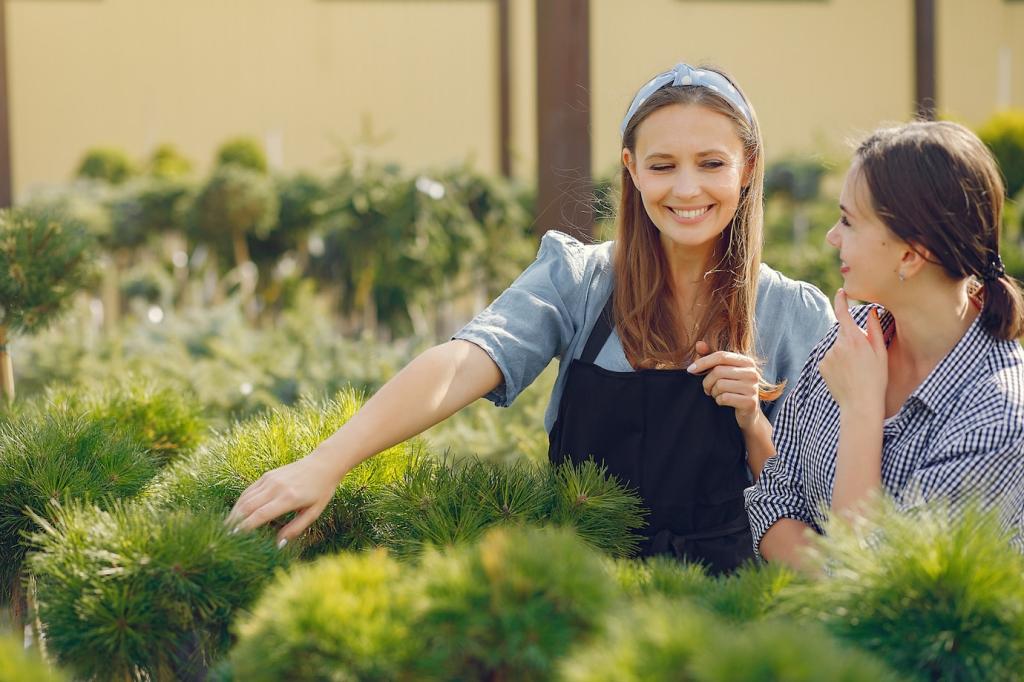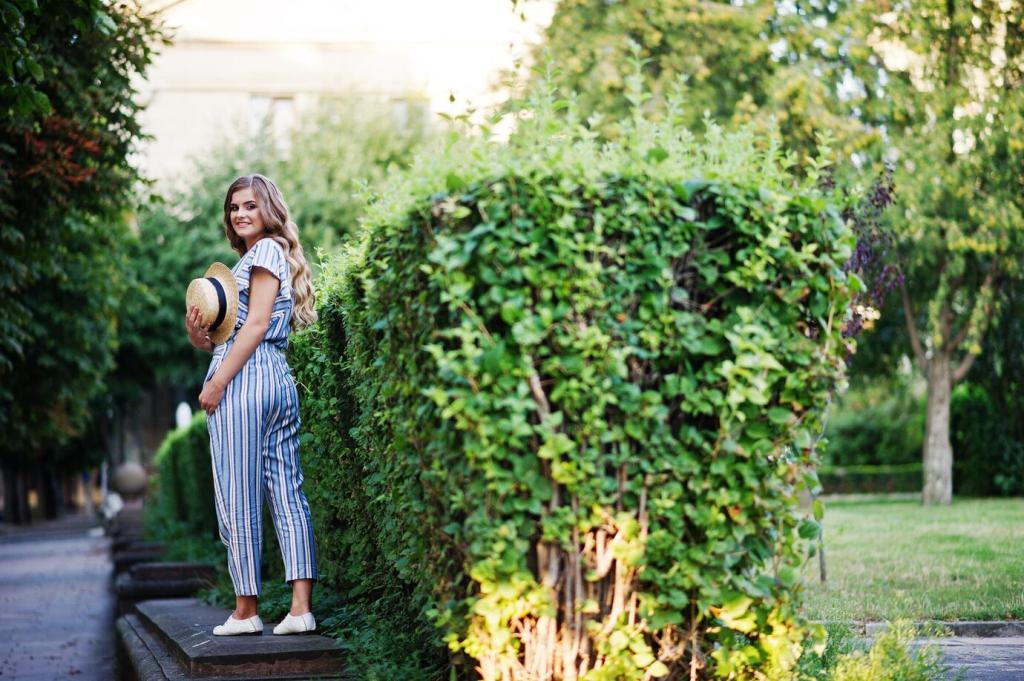On-Site Systems: Bins, Bays, and Windrows
Small yards thrive with enclosed tumblers that deter pests and accelerate mixing. Medium gardens benefit from paired pallet bays—one active, one curing. Large properties can manage windrows with a pitchfork or tractor loader. Match capacity to seasonal peaks like leaf fall to avoid overflow and frustration.
On-Site Systems: Bins, Bays, and Windrows
Use the squeeze test: compost should feel like a wrung-out sponge. Too dry stalls microbes; too wet turns anaerobic. Layer coarse browns for airflow, add greens gradually, and turn weekly during active heating. If time is tight, insert perforated pipes for passive aeration and steadier decomposition.


